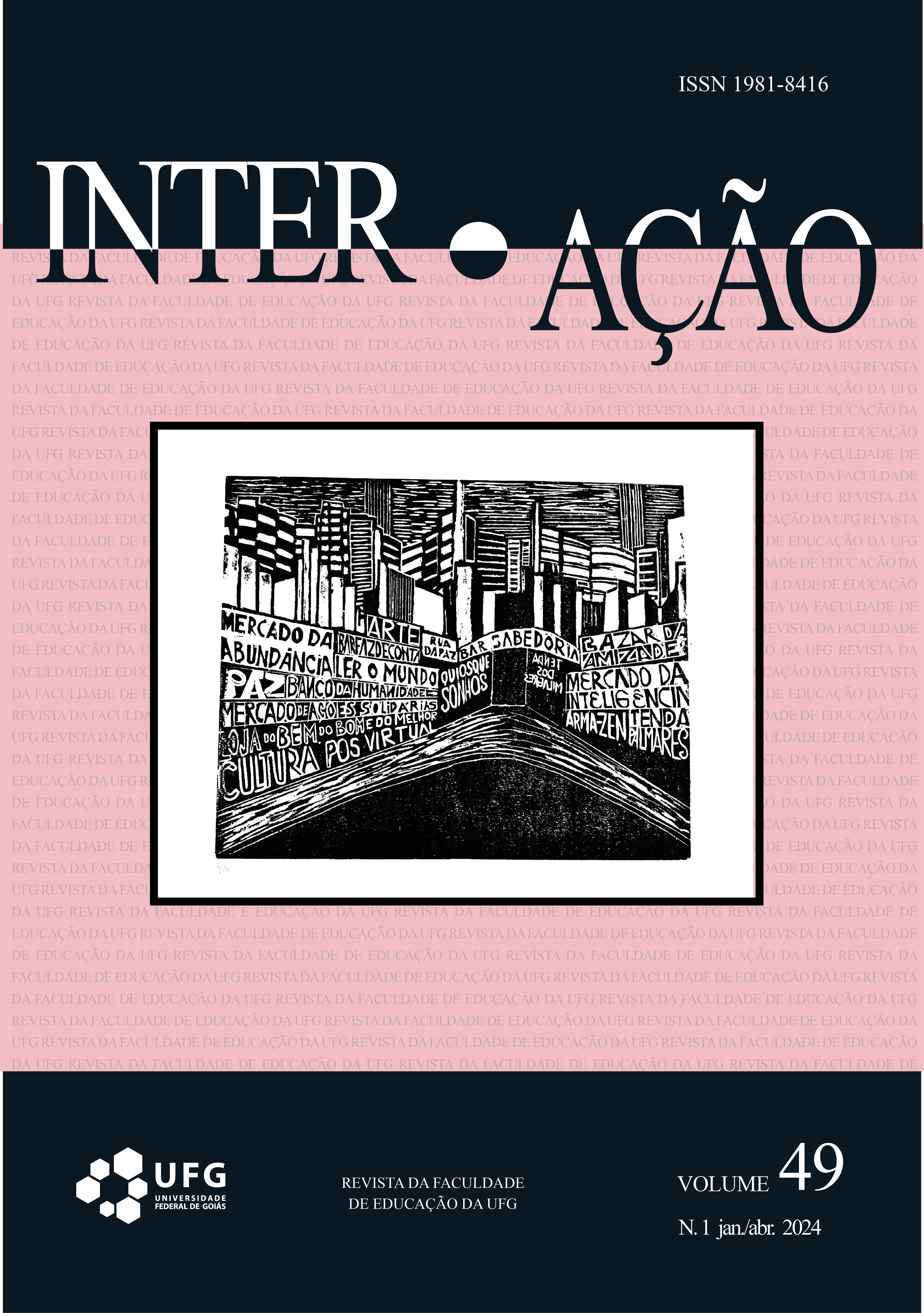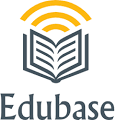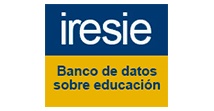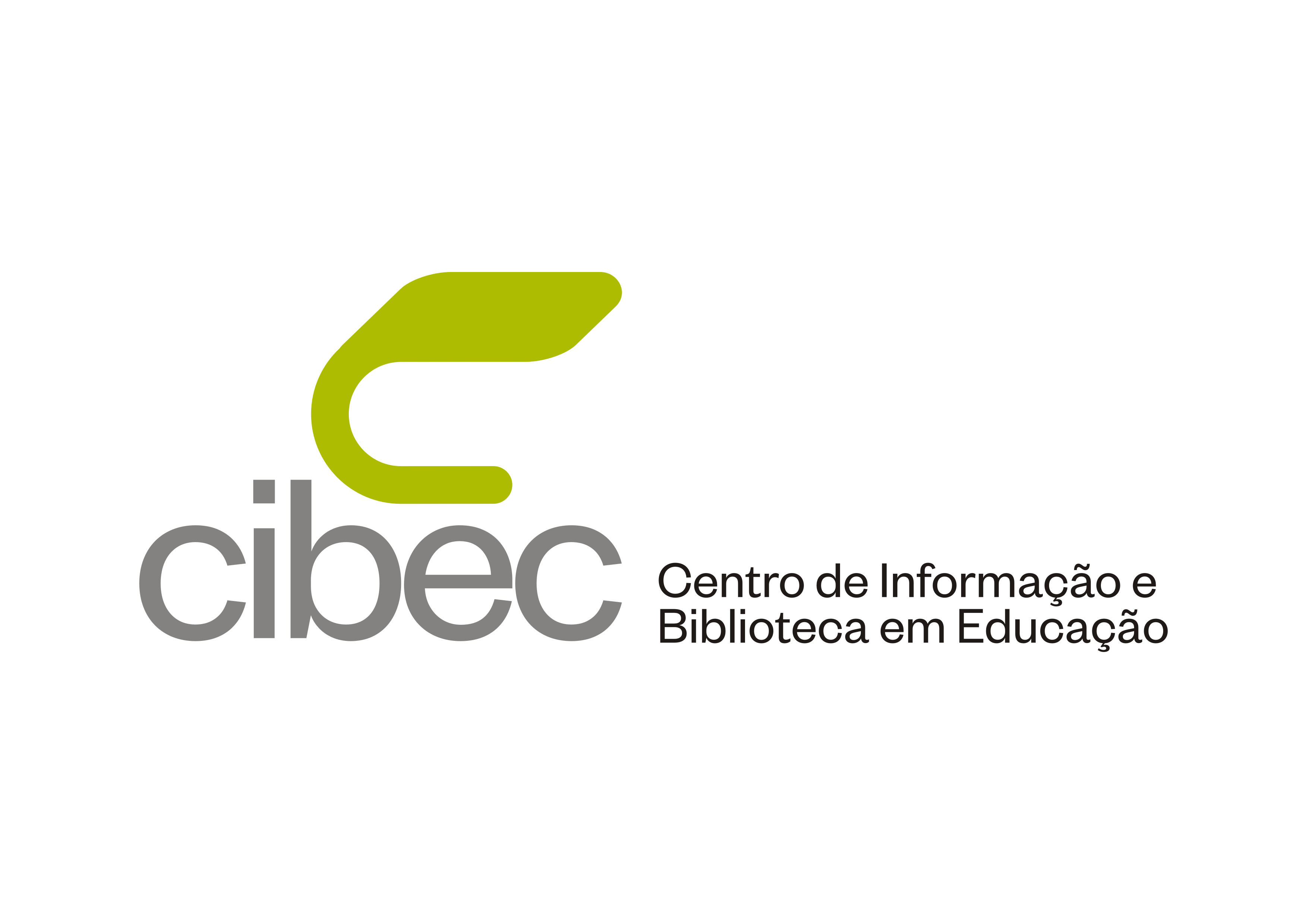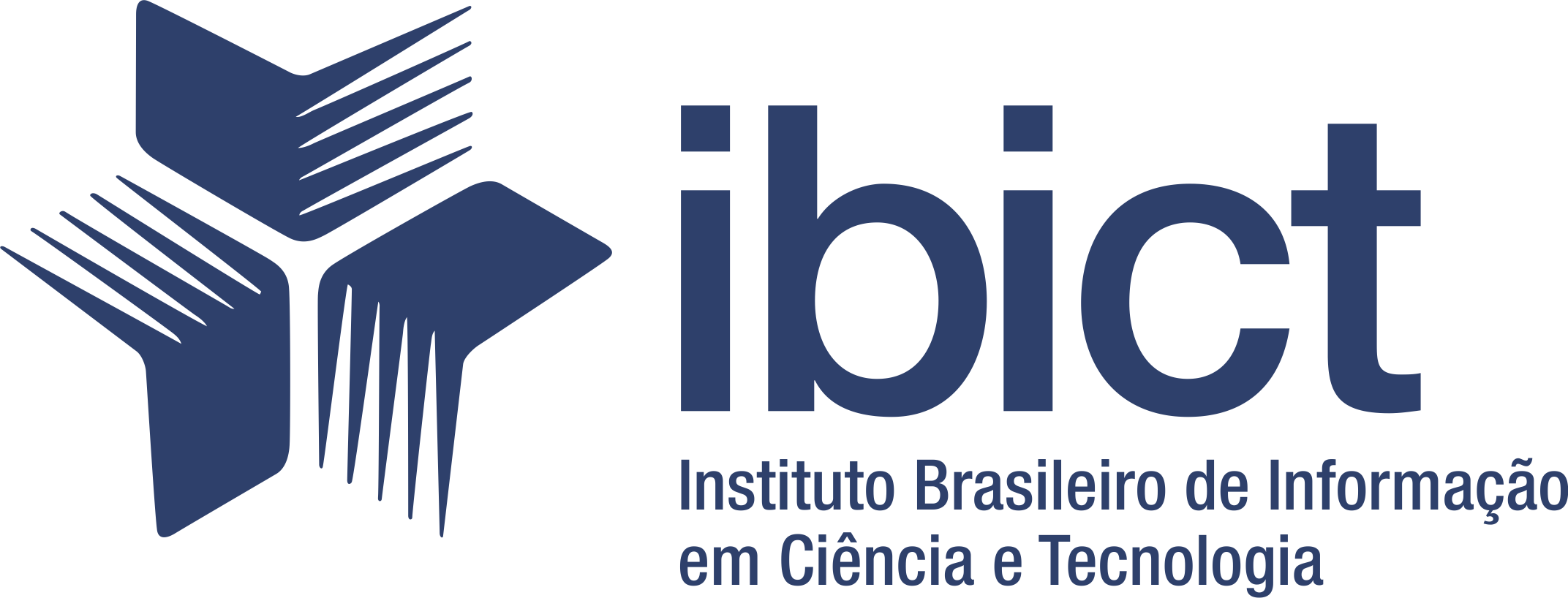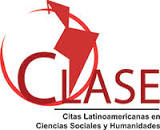CONSTRUCTION OF GAMES WITH FUTURE TEACHERS AIMING THE DEVELOPMENT OF CREATIVITY
DOI:
https://doi.org/10.5216/ia.v49i1.76694Keywords:
Creativity; Teacher Training; Programming Language; Learning.Abstract
Among the skills of the 21st century, creativity is an aspect that needs to be developed. The use of games in educational environments is important because it uses creativity, autonomy, and the exchange of ideas. In this article, the results of a research study that focused on creating a game development environment using the SCRATCH platform, based on the principles of STEM education, are presented. The main objective was to analyze the characteristics of a maker environment and identify signs of creativity manifested by teachers in initial training during the construction of games. The study involved the participation of 39 students from the Degree in Basic Education at the University of Minho, in Portugal. The adopted methodology was a case study based on the qualitative paradigm. Data were collected through participant observation, individual interviews and analysis of documents produced by the participants. The signs of creative learning were analyzed. It is possible to notice that teamwork, freedom of creation and the environment provide support so that the students can produce more efficiently and highlight their creative aspects.
Downloads
References
ALVES, Adriana Gomes; HOSTINS, Regina Célica Linhares. Desenvolvimento da imaginação e da criatividade por meio de design de games por crianças na escola inclusiva. Revista Brasileira de Educação Especial, Bauru, v. 25, n. 1, p. 17-36, jan./mar. 2019. Disponível em: https://www.scielo.br/j/rbee/a/kJbyj3HKnJdSp8QtY9D96tw/. Acesso em: 8 jan. 2021.
AMABILE, Teresa. The social psychology of creativity. Springer-Verlag: New York, 1983.
AZEVEDO, Ivete; MORAIS, Maria de Fátima. Avaliação da criatividade como condição para o seu desenvolvimento: Um estudo português do teste de Pensamento Criativo de Torrance em Contexto escolar. REICE: Revista Iberoamericana sobre Calidad, Eficacia Y Cambio en Educacion, Madrid, p. 1-17, 2012. Disponível em: https://repositorium.sdum.uminho.pt/bitstream/1822/21102/1/revista%20ibero%20americana.pdf. Acesso em: 12 maio 2022.
BAHIA, Sara. Quadros que compõem a criatividade: Uma análise do Teste de Torrance. SobreDotação, Braga, v. 8, p. 91-120, 2007. Disponível em: https://repositorio.ul.pt/handle/10451/2728. Acesso em: 1 maio 2022.
BORDINI, Letícia Cacciolari. Oficina de linguagem de programação para futuros professores visando o desenvolvimento de jogos com foco na criatividade. 2023. Dissertação (Mestrado em Ensino de Ciências Humanas, Sociais e da Natureza) – Ensino de Ciências Humanas, Sociais e da Natureza, Universidade Tecnológica Federal do Paraná, Londrina, 2023. Disponível em: http://repositorio.utfpr.edu.br:8080/jspui/handle/1/31610. Acesso em: 28 fev. 2024.
BRASIL. Ministério da Educação. Base Nacional Comum Curricular. Brasília, DF: Ministério da Educação, 2018.
BRETHERICK, Giselda Geronymo Sanches. Educação como formação para a vida: competências e habilidades do século XXI. Cadernos de Educação, São Paulo, v. 12, n. 24, p. 13-24, 2013. Disponível em: https://www.metodista.br/revistas/revistas-metodista/index.php/cadernosdeeducacao/article/view/4908/4116. Acesso em: 20 abr. 2022.
COHEN, Louis; MANION, Lawrence; MORRISON, Keith. Research Methods in Education. Canadá: Routledge, 2007.
CSIKSZENTMIHALYI, Mihaly. Creativity: Flow and the Psychology of Discovery and Invention. Nova York: HarperCollins, 1997.
CYSNEIROS, P. G. PAPERT, Seymour. A máquina das crianças: repensando a escola na era da informática. Revista Entreideias: educação, cultura e sociedade, [S. l.], v. 12, n. 12, p. 227-231, 2008. DOI: 10.9771/2317-1219rf.v12i12.2971. Disponível em: https://periodicos.ufba.br/index.php/entreideias/article/view/2971. Acesso em: 28 fev. 2024.
FREITAS, Natália; GOMES, Alexandra. Potencialidades da utilização do Scratch na aprendizagem da matemática: uma experiência no 4° ano de escolaridade. Jornal das Primeiras Matemáticas, Lisboa, n. 9, p. 5-19. 2017. Disponível em: https://repositorium.sdum.uminho.pt/bitstream/1822/52627/1/Freitas_Scratch_5_13%289_2017%29_low.pdf. Acesso em: 1 abr. 2022.
FULLAN, M. The Principal: Three Keys to Maximizing Impact. Canadá: John Wiley & Sons, 2014.
FÜHR, Regina Candida. Educação 4.0 e seus impactos no século XXI. In: V CONGRESSO NACIONAL DE EDUCAÇÃO. 5, 2018. Pernambuco. Anais [...]. Pernambuco: CONEDU, 2018. p. 1-6. Disponível em: https://www.editorarealize.com.br/editora/anais/conedu/2018/TRABALHO_EV117_MD4_SA19_ID5295_31082018230201.pdf. Acesso em: 13 mar. 2024.
GARDNER, Howard. Inteligências múltiplas: a teoria na prática. Porto Alegre: Artmed, 1999.
JUSTO, José Sterza. Criatividade no mundo contemporâneo. In: VASCONCELOS, M. S. (Org.), Criatividade: Psicologia, educação e conhecimento do novo. São Paulo: Moderna, 2001, p. 59-78.
MARTINS, Amanda Cristina; TINTI, Douglas da Silva. Levantamento das produções acerca do uso da Gamificação nos processos de ensino e aprendizagem de Matemática: um olhar para a formação de professores que ensinam matemática. Educação Matemática em Revista Brasília, Ouro Preto, v. 27, n. 77, p. 84-105, out./dez. 2022. Disponível em: https://www.repositorio.ufop.br/jspui/bitstream/123456789/17155/1/ARTIGO_LevantamentoProdu%c3%a7%c3%b5esUso.pdf. Acesso em: 20 fev. 2023.
MARTINS FILHO, Vilson; GERGES, Nina Rosa Cruz; FIALHO, Francisco Antonio Pereira. Design thinking, cognição e educação no século XXI. Diálogo Educacional, Curitiba, v. 15, n. 45, p. 579-596, 2015. Disponível em: https://www.redalyc.org/pdf/1891/189141165011.pdf. Acesso em: 13 jun. 2022
MORAN, José. Metodologias ativas para uma aprendizagem mais profunda. In: MORAN, Lilian Bacich José. Metodologias ativas para uma educação inovadora: uma abordagem teórico-prática. Porto Alegre: Penso, 2018, p. 35-76.
PAPERT, S. A máquina das crianças: repensando a escola na era da informática. Porto Alegre, RS: Artes Médicas, 2008.
RESNICK, Mitchel. Jardim de Infância para a vida toda: por uma aprendizagem criativa, mão na massa e relevante para todos. Porto Alegre: Penso, 2020.
RESNICK, Mitchel. Lifelong Kindergarten: cultivating Creativity through projects, passion, peers and play. 1. ed. Cambridge: MIT Press, 2017.
RIBEIRO NETO, Benedito de Souza; VIRGOLINO, Alan Barros; RIBEIRO; Aimeê Miranda. Formação de professores 2.0: a gamificação como ferramenta do ensino lúdico em escolas da região Amazônica. Brazilian Journal of Development, Curitiba, v. 7, n. 10, p. 98577-98586, out. 2021. Disponível em: https://ojs.brazilianjournals.com.br/ojs/index.php/BRJD/article/view/38018. Acesso em: 4 abr. 2022.
ROBINSON, K. O Elemento-Chave: Descubra o Seu Talento e Transforme-o em Vida e Carreira. Ribeirão Preto: Novo Conceito, 2015.
SÁ, Lucelia Cristina Brant Mariz. Competências para o século 21: o caso da Escola Estadual Julião Mendes. Pesquisa e Debate em Educação, [S. l.], v. 4, n. 1, p. 33–43, 2020. Disponível em: https://periodicos.ufjf.br/index.php/RPDE/article/view/31997. Acesso em: 28 fev. 2024.
SCOPEL, Janete Maria; CAVALLI, Gerson Luiz; SCUR, Luciana. Confecção de jogos com materiais alternativos como estratégia de ensino. Scientia cum Industria, Caxias do Sul, v. 4, n. 4, p. 216-218, 2016. Disponível em: https://www.researchgate.net/publication/314657256_Confeccao_de_jogos_com_materiais_alternativos_como_estrategia_de_ensino. Acesso em: 04 mar. 2024.
SILVA, Tania Cristina; AMARAL, Carme Lúcia Costa. Jogos e avaliação no processo ensino-aprendizagem: uma relação possível. REnCiMa, São Paulo, v. 2, n. 1, p. 1-8, jan./jun. 2011. Disponível em: https://revistapos.cruzeirodosul.edu.br/index.php/rencima/article/view/47. Acesso em: 4 mar. 2024
SILVEIRA, José de Anchieta. Construcionismo e inovação pedagógica: uma visão crítica das concepções de Papert sobre o uso da tecnologia computacional na aprendizagem da criança. THEMIS Revista da ESMEC, Ceará, v. 10, p. 119-138, 2012. Disponível em: https://revistathemis.tjce.jus.br/THEMIS/article/view/87/85. Acesso em: 4 mar. 2024.
SOARES, Elisabete Aparecida Alves; PRADO, Maria Elisabette Brisola Brito; DIAS, Fátima Aparecida da Silva. Formação do professor da educação básica na perspectiva da aprendizagem criativa. Revista e-Curriculum, São Paulo, v. 18, n. 4, p. 1879-1894 out./dez. 2020. Disponível em: https://revistas.pucsp.br/index.php/curriculum/article/view/47984. Acesso em: 2 maio 2022.
SOUZA, Juliana Campos Sabino; FONSECA, Mateus Gianni. Mais que jogar, criar: as contribuições do desenvolvimento de jogos no processo de ensino-aprendizagem de matemática. Perspectivas da Educação Matemática, Campo Grande, v. 12, n. 28, p. 1-13, 2019. Disponível em: https://periodicos.ufms.br/index.php/pedmat/article/view/9403. Acesso em: 3 abr. 2022.
TANEMBAUM, Courtney. STEM 2026: A Vision For Innovation In STEM Education. Washington, DC: Office of Innovation and Improvement, US Department of Education, 2016. Disponível em: https://oese.ed.gov/files/2016/09/AIR-STEM2026_Report_2016.pdf. Acesso em: 4 mar. 2024.
TORRANCE, Elis Paul. Experiences in developing creativity measures: Insights,
discoveries, decisions. University of Georgia; Athens; Georgia: Unpublished manuscript; Torrance Center for Creative Studies and Talent Development, 1990.
UNESCO. Educação para a cidadania global: preparando alunos para os desafios do século XXI. Brasília, DF: UNESCO 2015.
WASH. Wash.net. [S. l.]. [2021]. Disponível em: https://wash.net.br/o-que-e-o-wash. Acesso em: 15 out. 2021.
WECHSLER, Solange Muglia. Avaliação da criatividade verbal no contexto brasileiro. Avaliação Psicológica, Porto Alegre, v. 3, n. 1, p. 21-31, 2004.
Published
How to Cite
Issue
Section
License
Copyright (c) 2024 Letícia Cacciolari Bordini, Alexandra Gomes, Paulo Sérgio de Camargo Filho

This work is licensed under a Creative Commons Attribution-NonCommercial 4.0 International License.
Inter-Ação uses the Creative Commons Attribution 4.0 License for Open Access Journals (Open Archives Initiative - OAI) as the basis for the transfer of rights. Open access means making documents available on the Internet free of charge, so that users can read, download, copy, distribute, print, search, or link to the full text of documents, process them for indexing, use them as input data for software programs, or use them for any other lawful purpose, without financial, legal, or technical barriers.
Authors publishing in this journal agree to the following conditions:
1) Authors retain copyright and grant the journal the right of first publication, with the work simultaneously licensed under the Creative Commons Attribution License, which permits redistribution of the work with attribution and first publication in this journal.
2) Authors are permitted to enter into additional, separate agreements for non-exclusive distribution of the version of the work published in this journal (e.g., for publication in an institutional repository or as a book chapter), with attribution and first publication in this journal.
3) Authors are permitted and encouraged to publish and distribute their work online (e.g. in institutional repositories or on their home page) at any time before or during the editorial process, as this may generate productive changes as well as increase the impact and citation of the published work.

